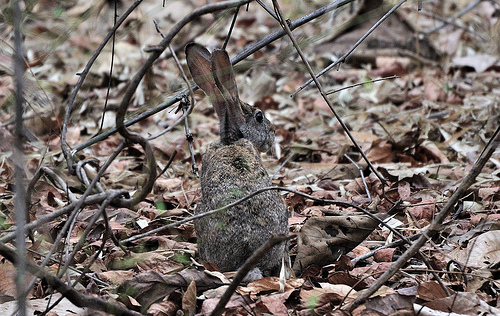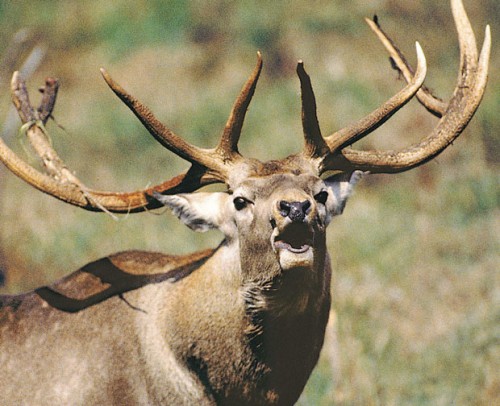 The black naped hare or the Indian hare is not endangered. In fact it is a species enlisted as of least concern in the red list of IUCN. But lately, this abundant species has become the target of poachers, making the animal’s life vulnerable and hastily raising concern for the future of the animal.
The black naped hare or the Indian hare is not endangered. In fact it is a species enlisted as of least concern in the red list of IUCN. But lately, this abundant species has become the target of poachers, making the animal’s life vulnerable and hastily raising concern for the future of the animal.
Last month forest officials nabbed 21 poachers from Virudhunagar district in Tamil Nadu. Their target was specifically the Indian hare Lepus nigricollis.
“That the black-naped hare, a cute, playful species of the tropical forests would land in such a death trap could never be known to me until we unearthed a big poaching racket involving scores of people and lots of live and dead specimens. This was the result of a special drive that we conducted whole of the first week of September,” said Shekhar Kumar Niraj, Conservator of Forests, Virudhunagar Circle, and Director of Gulf of Mannar Marine Biosphere Reserve.
What was an additional surprise to the officials was that apart from the locals involved in poaching, they also found college students being part of the gang.
Niraj said, “Although the indications are that a particular community in Sivaganga and Virudhunagar districts (Old Kamraj district) of Tamil Nadu are systematically involved in its poaching, along with partridges (Phasianidae) and the Indian peafowl (Pavo cristatus), we found college students were also part of the poacher gang – an entirely new phenomenon.”

The gang are well networked too. They poach and send the dead animals to different districts using public transports. They also have specialised tools to catch the hare. The trap consists of a conical shaped strong net and searchlights fitted with buzzers that attract the animals towards the light. This trap costs about Rs. 3000 per trap. As the hare are nocturnal animals, the trap affectively helps catch them during the night.
Ecological Significance of the Indian Hare
The Indian Hare is prey to many small mammals in the jungle including the jungle cats, mongoose, jackals and foxes. If its population dwindles it will automatically affect the population of these species too. Although the hare is found widely in India accept in mountain areas and Sunderbans, poaching is posing a serious threat to their survival.
Indian hare are also found in eastern Pakistan, southern Nepal, Sri Lanka, and Bangladesh. There are many seven subspecies in India occupying different regions and habitat types.
The Lepus nigricollis can be seen in wide variety of habitats such as short grasslands, barren agricultural fields, crop fields, and forest roads. The species can be seen in forests of many types other than the mangroves and tall grassland habitats. It breeds throughout the year, but the peak breeding season is during the monsoon season
Why the Increase in Poaching?
Earlier when one or two cases of hare hunting was reported to the forest officials, they thought they were individual cases where the hares were hunted for meat. But over the last four months, the hunt has expanded to such a high number that even they are puzzled as to the reason for the sudden high demand. While the main reason for the killing still seems to be the meat of the animals which is considered very delicate, officials think there might be more.
Says Niraj, “Previously, it had appeared that the hare was being hunted sporadically for meat, which is soft and considered a delicacy among the local communities. But since the last four months when we started collecting intelligence and launched a special drive, it came as a shocking revelation to us that poaching of this species is driven by a great trade demand.”
“Look at the volume – in eight raids that we conducted during the last four months, we have arrested 39 people involved in poaching and seized more than 50 animals. The offenders have used public transport, private vehicles, and local transport to move the animals (mostly live). The initial interrogation had indicated to a much larger and well-organised poaching and trade network. We are working on leads. But there are unanswered questions yet. Is the skin (of the hare) also in demand? Is this a delicacy in star hotels?”
While the official mull over the problem, yet another animal in the Indian forests gets hunted by men who just can’t live and let live.
Related Stories:
Specialised counter Poaching Training for Asia’s Forest rangers
Poachers on the Prowl for Blackbuck Meat
Poachers Kill Ganga River Dolphin in Bihar
Article reference: Digitaljournal Image via cc Flickr by safique









